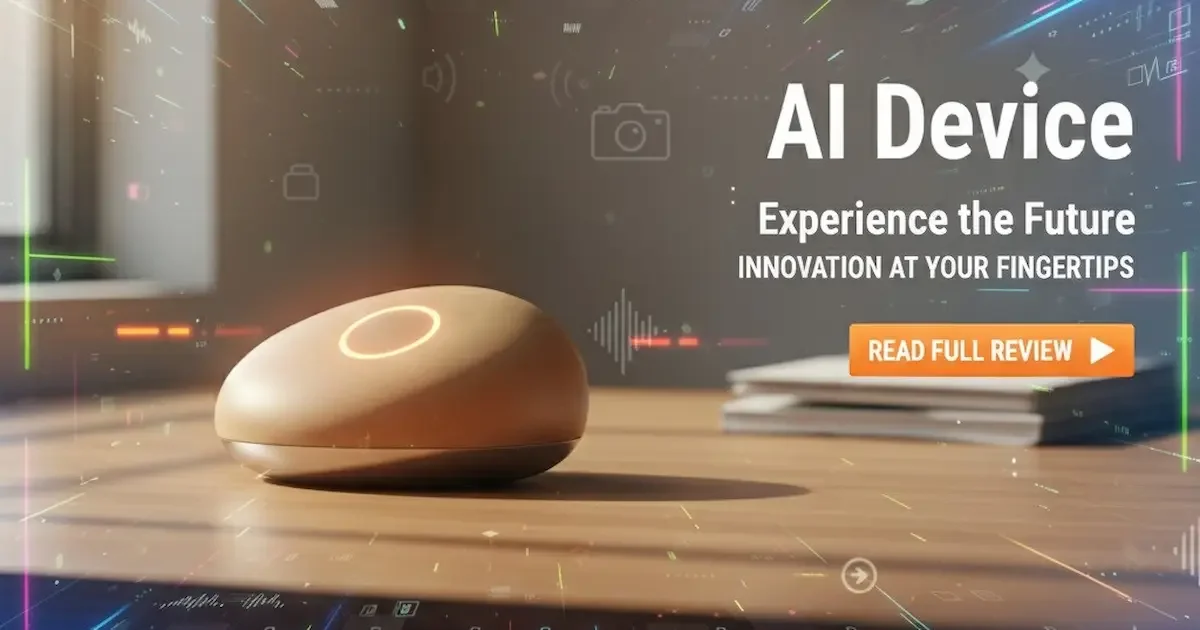Here’s what we know — and what we don’t — about the whispered “screen-less AI device” reportedly bubbling out of OpenAI and Jony Ive’s studio.
OpenAI and Ive (of iPhone, iMac, and Apple Watch fame) are said to be building a palm-sized, screen-free gadget that listens, sees, and talks back — a kind of ambient companion rather than yet another rectangle you poke all day. Recent reporting says the project is real, ambitious, and currently stuck in the mud on some tough problems. Timeline? Targeting “next year,” but don’t carve that on a stone tablet just yet.
If you’re thinking, “didn’t they already ‘merge’ something?” — yes. In 2025, OpenAI said io Products, Inc. (a hardware startup associated with this effort) merged into OpenAI, while Ive’s design firm LoveFrom stayed independent but deeply involved. Earlier reporting had pegged the deal value around $6.4–$6.5B. That means there’s real money and real teams behind this — not just a mood board and a dream.
What this thing (probably) is
Picture a pebble-like device with microphones, cameras, and a speaker — always listening for context, always ready to help, and notably without a traditional display. Think “AI-native assistant” that leans on audio and vision to understand what you’re doing and then speaks or chimes in when useful. Conceptually, it’s smarter than a smart speaker and less needy than a smartphone. That’s the elevator pitch. The devil is riding along between the floors.
The big roadblocks (and why they matter)
1) Compute is a brick wall
Running cutting-edge multimodal models in real time, at consumer scale, is expensive and infrastructure-hungry. Reports suggest OpenAI already struggles with compute needs for its services; add a mass-market device that’s “always on,” and the server bill (and GPU supply chains) get ugly fast. The company has reportedly engaged Apple supplier Luxshare and explored partners like Goertek for hardware — but silicon and server capacity are the rate limiters here. Until there’s a reliable, affordable path to inference at scale (cloud, edge, or a clever mix), shipping millions of these is tricky.
2) Personality, UX, and the “when to speak” problem
A screen-less assistant needs brilliant judgment: when to interrupt, how to stay quiet, what tone to use, and how to be helpful without being creepy. That sounds soft, but it’s the hardest bit — the human factors. Reports say the team is still wrestling with assistant “character,” interaction cadence, and reliability. Voice-only UX is unforgiving; one awkward interruption or wrong guess and users will mute the thing forever.
3) Privacy (especially in India)
An always-listening, camera-equipped device is a privacy landmine. India’s Digital Personal Data Protection Act, 2023 (DPDPA) requires clear, specific consent; easy revocation; and fast redressal. If this device streams audio/video to the cloud for context, OpenAI (or any local partner) becomes a “data fiduciary” with explicit obligations, breach notifications, and potential penalties. That means consent flows, local notices, data minimisation, and robust opt-outs must be designed from day one — in the app, voice prompts, and policies. Otherwise, launch plans here will hit regulatory speed breakers.
4) Hardware reality checks
The recent crop of “AI gadgets” is a cautionary tale. Humane’s Ai Pin battled heat, recalls for its charging case, brutal reviews, and ultimately shut down service after a sale — leaving buyers with expensive paperweights. Rabbit’s R1 shipped rough, improved over time, but never became must-have. If OpenAI and Ive go screen-less, they inherit all of that baggage: thermals, battery life, microphones that work in Indian traffic, and a value proposition beyond “my phone already does this.”
5) India-specific launch hurdles
Bringing any wireless gadget here means WPC-ETA approvals for radios (Wi-Fi/Bluetooth, etc.), plus BIS for certain categories. None of this is impossible — Apple, Google, and every accessory brand do it — but it adds time, testing, and compliance work. For a novel category, expect extra scrutiny.
Why this device could still be a big deal
Despite the mess, a screen-less assistant is a genuinely fresh take on computing. If it nails three things — (1) trust and privacy, (2) graceful, low-friction help, and (3) reliability in the noisy, multilingual, low-connectivity real world — it could sit alongside your phone like AirPods do: not a replacement, but indispensable.
For India specifically:
· Languages and accents: Hinglish, regional languages, and code-switching must be native, not an afterthought.
· Patchy connectivity: Offline or on-device “lite” inference for common tasks matters when 5G drops to nothing.
· Price & value: Anything above a mid-range smartphone price without a screen will be a hard sell. The benefits must be immediate and obvious (e.g., dictation/translations that actually work on Delhi’s Metro platform).
· Household mode: Multi-user, privacy-aware, context sharing for families — very relevant in Indian homes.
My take: aim for “quiet competence,” not “AI fireworks”
The temptation is to ship a magical demo machine. But the wins here are boring: rock-solid wake word detection, non-creepy glanceable cues (a light, a haptic), and latency under a second. Add clear privacy controls: a blunt physical mute switch, local processing for wake words, and a consent ritual you can repeat and revise.
Given the current reporting, I wouldn’t bet on a broad consumer launch in the immediate term. The partnership looks real, the ambition is huge, and the obstacles are equally huge. Better to ship later with trust and usefulness than to rush into the Humane/Rabbit trap.
Note: Status and timelines are unconfirmed and based on the most recent credible reporting as of 6 October 2025 (IST).
